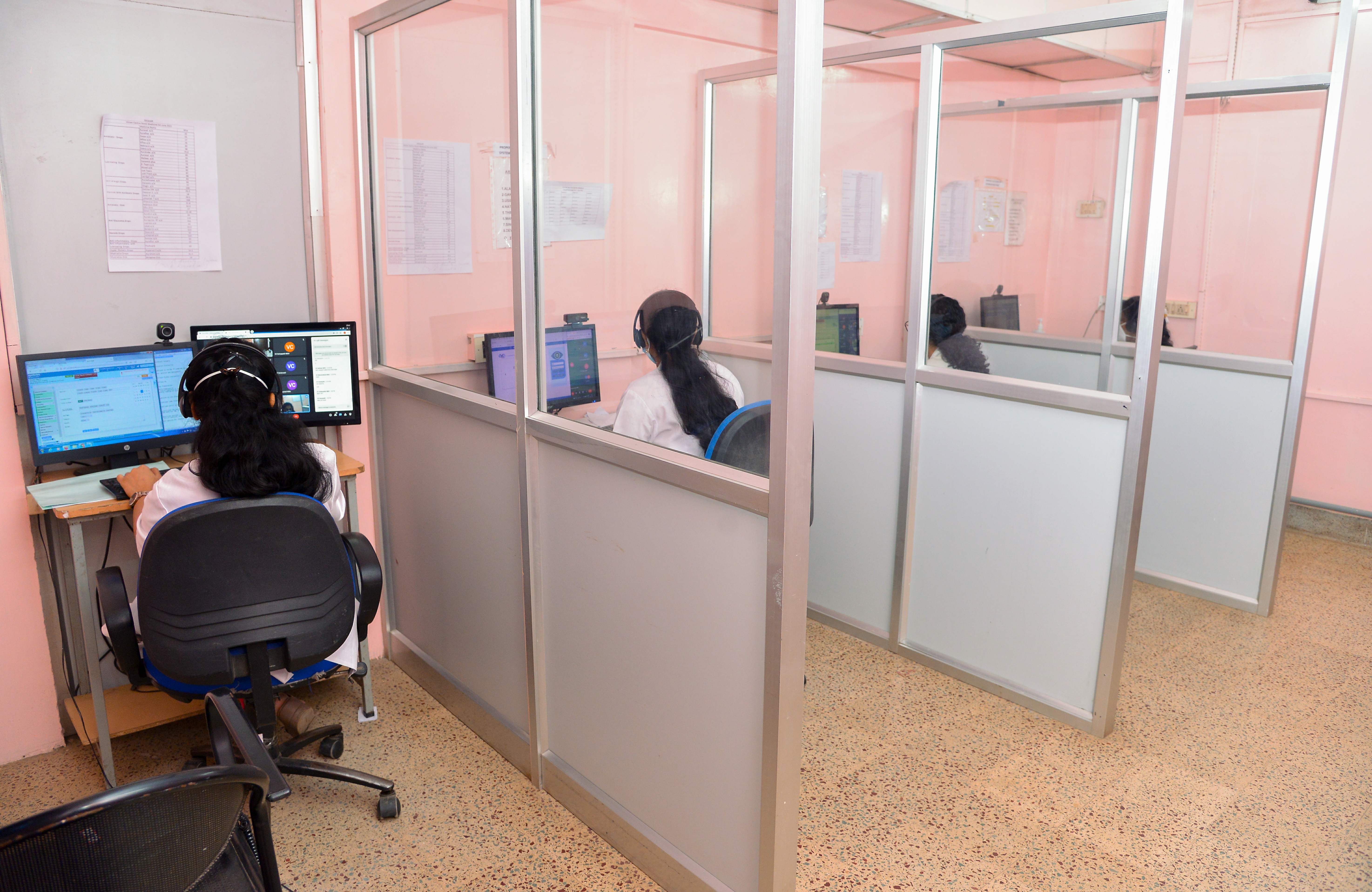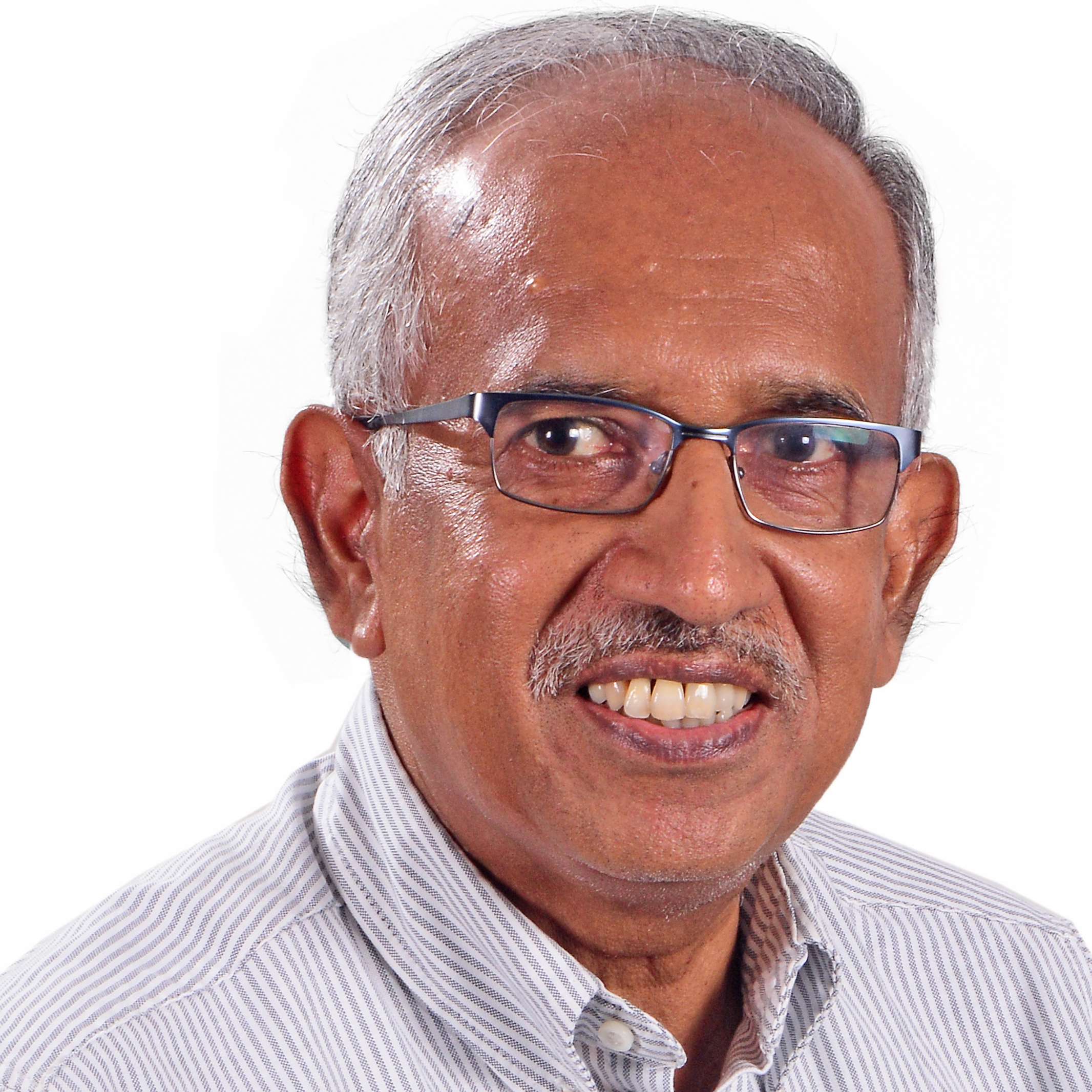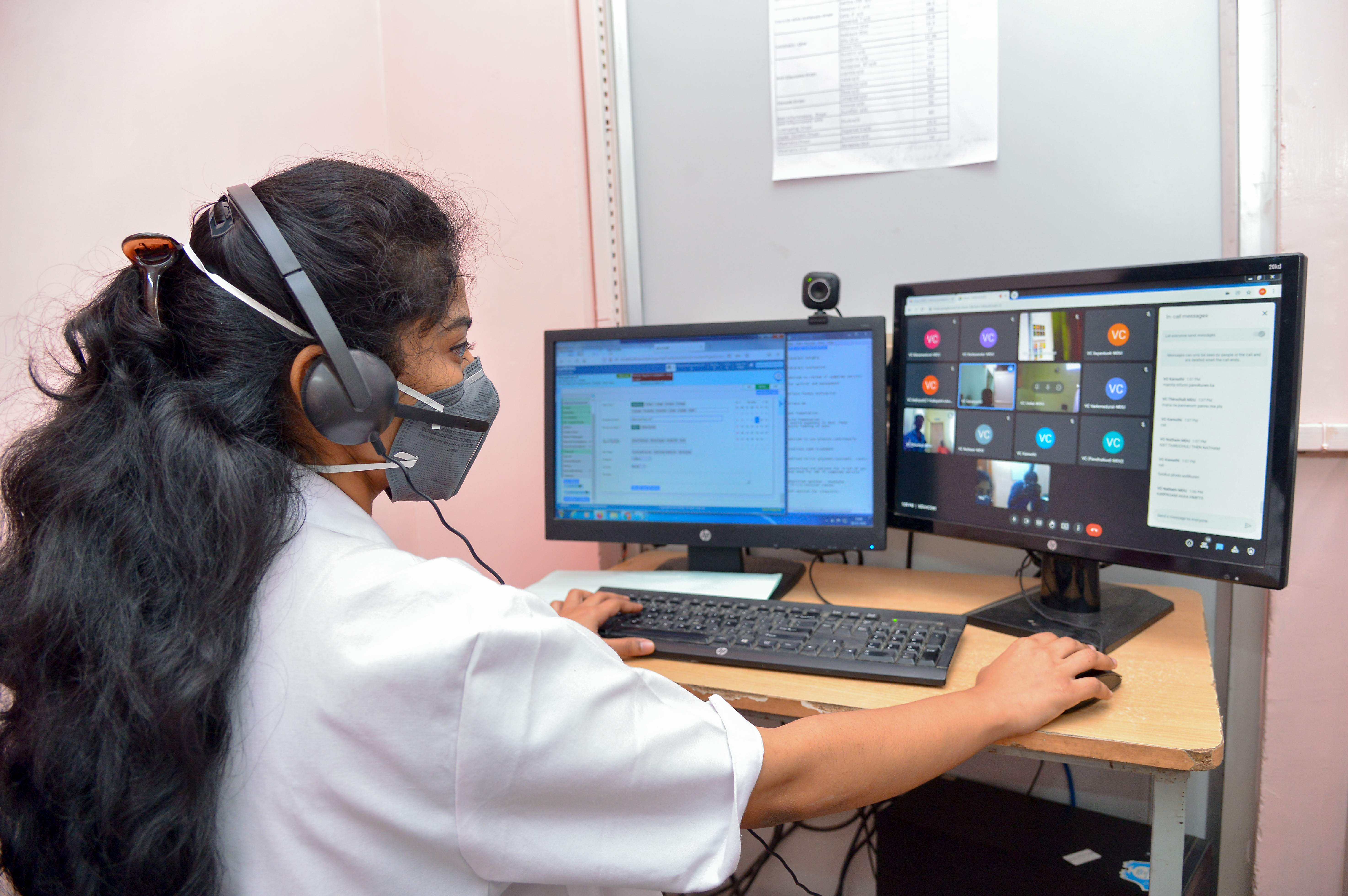Assisted telemedicine to increase access to health care and reduce carbon footprint
Thiruppuvanam Vision Centre of Aravind Eye Care, India.
Case study summary
The implementation of satellite-assisted telemedicine centers provides subsidized primary eye care to peri-urban populations who previously did not have any eye care facilities in their region. This increases access to primary eye care, cures needless blindness, and reduces the carbon footprint by reducing patient travel to big tertiary care hospitals in nearby cities.
Demographic information
- City: Thiruppuvanam and Madurai
- State/province/region: Tamil Nadu
- Country: India
- Type of institution: Private tertiary eye care hospital and its satellite-assisted telemedicine center
- Number of full-time staff: 2 staff at the telemedicine center
- Number of part-time staff: 0
- Patient population served annually
- 9,600 served annually (total of inpatient and outpatient)
- Geographic area served: Thiruppuvanam (and 7 km surrounding area)
- Top 1-3 health equity concerns experienced by the population: Lack of an eye health facility in the 15 km radius; eye care is fully dependent on temporary eye camps, which happened once a year before establishing the vision center; as an alternative, patients choose traditional healers or stay at home instead of traveling to the nearest city, which involves cost, assistance, and effort.
The issue
Public health infrastructure and services in peri-urban and rural India are lacking or inadequate, leading to a gap in access to health care especially for rural poor. In Thiruppuvanam, a small town in Tamil Nadu, there is a poorly functioning, government-run community health center without ophthalmology services. The residents in and around Thiruppuvanam practiced basic traditional eye care and did not seek early care for treatable eye ailments. The closest eye care hospital was 20 km away in the city of Madurai, and patients would have to travel that distance, often at the cost of their daily wages.
Setting up a new secondary/tertiary care hospital in such regions would be financially and environmentally costly. The environmental footprint of health care infrastructure and delivery is currently 4.4% of global emissions. High-quality care is predominantly available to Indian populations in big, energy-intensive tertiary care hospitals. Expanding services to achieve universal health care goals must be done in a sustainable way.
Hospital goal
- To contribute to universal coverage in eye care through assisted telemedicine in satellite vision centers.
- To reduce the need for patient travel to energy-intensive tertiary care hospitals.
- To deliver quality care with a low carbon footprint.
Sustainability strategy implemented
Satellite telemedicine centers that provide primary eye care were set up by Aravind Eye Care. The Thiruppuvanam vision center caters to populations within a 7 km radius of the town and is staffed with a coordinator and a vision technician. The vision center technician consults with patients and connects in real-time to ophthalmologists at the base hospital in Madurai, 20 km away.
The vision center (VC) is set up in an existing building and uses minimal electricity (for lighting/fans/primary care equipment). The medical equipment was sourced from Aravind’s own production company Aurolab in the same state.
Costs are subsidized for services (0.3 USD) and medication (1 USD). This way, Aravind provides high-quality, affordable eye care with a low carbon footprint to the rural poor.

Implementation process
The process for developing a satellite telemedicine center for primary eye care includes:
- Conducting a demographic study and needs assessment in a potential location to assess the socio-economic status of the region and existing health facilities.
- Identify existing buildings (if possible) and central locations.
- Three days of intensive outreach in the community after identifying hotspots where the population works and gathers (such as at the brick factories) or door-to-door if needed.
- Expenses: USD 16,500 to set up and USD 7800 to run annually.
- Equipment sourced from Aravind’s Aurolab nearby.
- Local women trained (for two years) and hired as staff in the VCs.

Harnessing technology and design that closes the care loop with minimum visits, are key to reducing carbon emissions and is a win-win for patients and the provider.
Executive Director - LAICO, India
Tracking progress
In 2021, 8,553 trips were avoided due to patients visiting the vision centers rather than the base hospital, saving 54.3 tCO2e. Health Care Without Harm’s climate impact checkup tool was used to calculate this.
Progress achieved
Thiruppuvanam Vision Centre:
- Established a vision center in a small town without prior ophthalmology services.
- Provided service for more than 59,000 patients since 2009.
- Incentivized patients to seek earlier treatment for vision problems.
- Disseminated IEC materials on eye care and eye safety.
- Trained and hired local women as ophthalmology nurses and provided workplace benefits and job security.
- Reduced 54.3 tCO2e emissions due to reduced patient travel in 2021.
Aravind Eye Care Vision Centres:
- 100 vision centers established in India (in Tamil Nadu and Puducherry) as of March 2022.
- Serves a population of 8,500,000 who had not previously had access to eye care.
- Around 700,000 outpatient visits annually.
- 90,000 spectacles dispensed.
- 85% patients fully treated on site; only 15% referred to tertiary eye care hospitals.
- 25,000 cataract surgeries done through referring to tertiary eye care hospitals.
- 80% of staff are local women, providing employment opportunities.

Challenges and lessons learned
A key challenge in the initial days of the new clinics was changing the behavior of the community from reactive to proactive, as they were accustomed to waiting for temporary eye camps. This was addressed by:
- Door-to-door visits by trained health workers conducting eye screenings, identifying patients with eye defects, and motivating them to visit VCs. Active follow-up is done in the field to ensure those with eye defects accessed VCs for eye care.
- Engaging the community in identifying locations for VCs and inviting the community leaders for inauguration.
- Organizing specialty eye screening and health education programs for various stakeholders in the vision center service area.

Hiring Aravind staff from the VC service area helped connect the community. Trust was built through consistent and comprehensive eye examinations, affordable fees for services, availability of teleconsultation with the base hospital for each patient, follow-up for chronic eye conditions, and completion of the care cycle for 85% of patients at the VC. These actions were done consistently to address challenges and helped with the successful implementation and scaling of VCs.
Next steps
- Expand VCs to reach 150 centers across Tamil Nadu, Puducherry, and Andhra Pradesh states.
- Reduce single-use plastics in the vision centers.
- Optimize the use of equipment through maintenance.
- Pilot and scale solar power for all vision centers.
- Implement artificial intelligence for glaucoma and diabetic retinopathy treatment.
